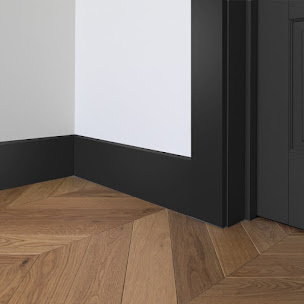Essential Tips for Installing Stair Treads and Risers
Anti Slip Stair Treads and risers' installation is a major activity in staircase construction and renovation. Correct installation means safety, resistance, and an attractive appearance.
Selecting the Right Material
Good material picking is important for a staircase in order to make it durable. Normally, hardwood, engineered wood, plywood, and composite materials are used. Long-lasting hardwood species like oak, maple, and hickory give the strength and high-end finish required, while other types of materials, such as engineered wood and composites, may be a little bit cheaper.
Proper Preparation of Stairs
Pre-installation: The stair tread cover structure should be level, clean, and dry. Remove any debris, old adhesive, or protruding nails that may impact adhesion or alignment. If required, reinforce the stringers, ensuring they are firmly attached to each other to prevent any movement over time.
Measure Accurately
Precise measurements are the key to professional finishing. Measure the width and depth of each step individually because there can be variations. Cut the risers and treads so that there is about a 1-inch overhang to improve function and looks.
Install Risers Before Treads
Install the risers before the stair treads. This is a nice-looking method to finish. Use construction adhesive to nail or screw the risers in place. Be sure that they are flush with the stringers and align them accordingly.
Apply Adhesive for Stability
Squeaking and movement can be eliminated completely by the use of a good-quality construction adhesive in conjunction with the use of nails or screws. Apply an even layer of adhesive on the stair stringers before laying the treads and risers. This way, the bonding is substantially improved, adding much strength to the staircase.
Secure Treads Tightly
Install the treads such that they just project over the top of the Stair Risers, then nail or screw them to the risers. Screw only from the top for the screws; countersink the screws slightly and fill in the holes with wood filler. Check each tread for level and proceed to the next step.
Allow Expansion and Contraction
Because wood is a natural material, it expands and contracts with variations in temperature and moisture. Leave just a slight gap—a mere 1/16 inch—between each of the treads and the wall so this movement will not risk cracks or buckling in a few years' time. Sand and Finish Properly Lightly sand installed treads and risers to a fine finish for a smooth surface. Use a good stain and sealant for protection from wear and tear. Prime and Paint If the risers are to be painted, apply tough, scuff resistant paint to keep them looking fresh.
Check for Safety and Stability
Check the staircase after installation, ensuring that treads and risers are not loose. Use the stairs to go up and down to ensure they are sound and don't squeak. Make any needed adjustments before final finishes.
Installation of Stair Tread Covers and risers gives the house better safety and aesthetic appeal. A staircase would be durable, safe, and visually attractive with quality materials, exact measurements, appropriate tools, and proper installation. The tips mentioned here form the basis for successful installation of stairs that can last longer.




Comments
Post a Comment